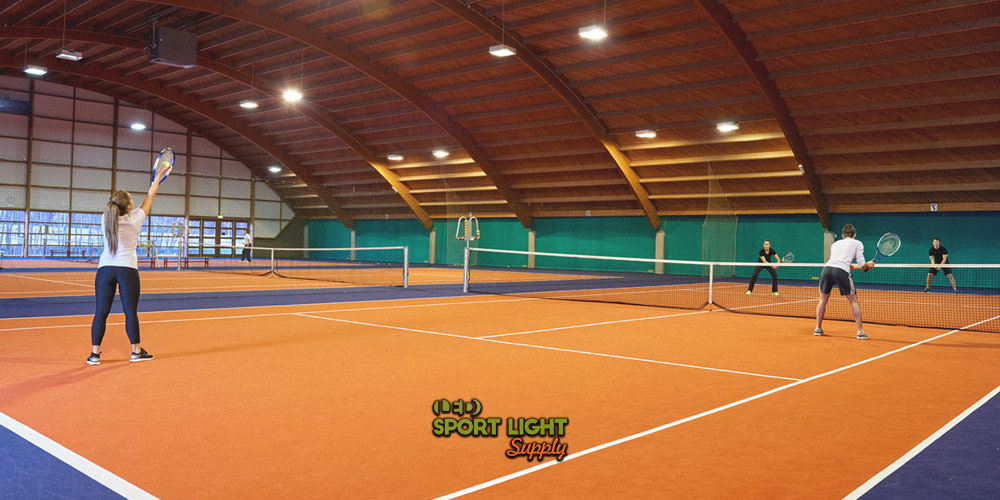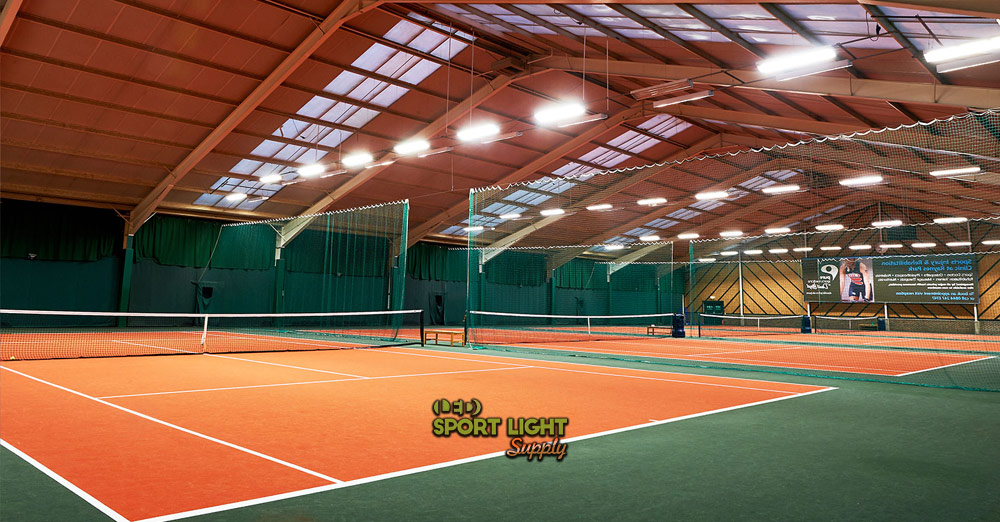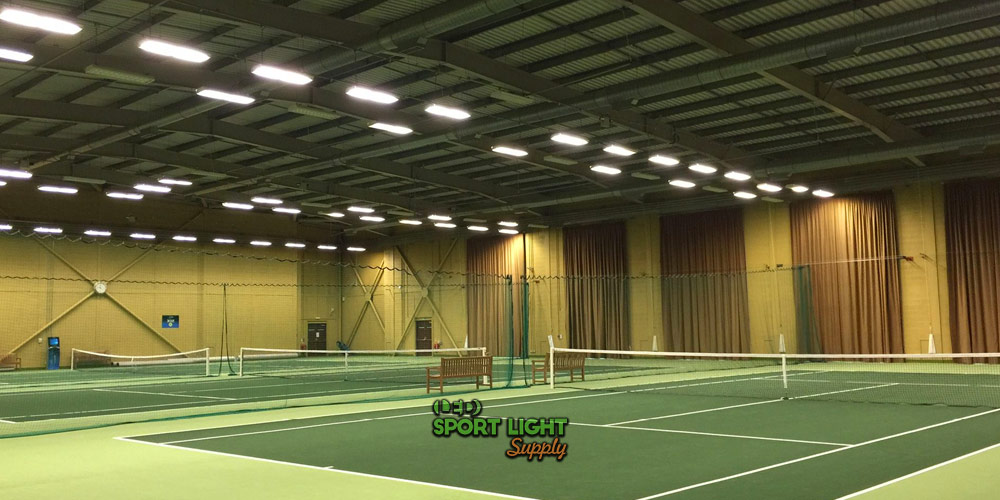If your home tennis court is equipped with older lighting, it may no longer be as efficient as it once was, making it a good time to consider an upgrade. Rather than simply replacing the bulbs, you might want to consider upgrading the entire light unit to LED technology. Retrofitting your existing tennis court lights with LED options is an easy decision when you consider the numerous advantages it offers.
Table of Contents
ToggleWhat is a Retrofit?
Retrofitting is a common practice in sports arenas where old lighting systems are upgraded to more efficient and modern options, often LED lighting. This trend has become increasingly popular among homeowners who are looking to enhance their home tennis courts with better lighting solutions. LED lights offer superior management and significantly improve the visual experience compared to traditional metal halide (MH) and high-pressure sodium (HPS) lamps. The decision to retrofit makes sense because it reduces the frequency of replacements required over time.
However, the benefits of LED technology extend far beyond just lighting up your tennis court. There are several compelling reasons to consider this upgrade.
Why Retrofit Tennis Court Lighting to LED?
Retrofitting your tennis court lighting to LED offers numerous benefits that make it a worthwhile investment. These advantages are not only obvious but also significantly improve the quality of tennis gameplay.
Advantages Over Metal Halide or HPS
Metal halide and HPS bulbs have several drawbacks that make them less ideal for tennis court lighting. They are highly sensitive to weather conditions, produce excessive heat, and attract insects, creating an unpleasant environment. Additionally, the noise generated by these bulbs can be irritating, and the frequent need for replacements can become costly and inconvenient.

Benefits of LED Lighting for Tennis Courts
| Feature | LED Lighting |
|---|---|
| Cost Savings | LED lights have a much longer lifespan, lasting 15-20 years or more, which drastically reduces replacement costs. The energy savings are also significant, as LEDs consume much less electricity. These savings are further enhanced by the long factory warranty that often accompanies LED lights. |
| Light Coverage | Unlike traditional lights, LED lights use multiple focused beams, providing superior court coverage. This design minimizes overhead shadows and ensures that every detail on the court is well-lit. |
| Luminous Efficiency | LEDs offer high luminous efficiency, with improved CRI (Color Rendering Index) and reduced glare, resulting in more comfortable and accurate lighting. The GR rating of 55 is suitable for semi-professional tennis courts, offering a corrected daylight color temperature that metal halide and HPS lights cannot match. |
| Warm-up Time | LED lights have no warm-up time and provide instant illumination. Unlike older bulbs, LEDs do not overheat and are ready to use immediately when needed. |
| Programmability | LED systems can be easily programmed to dim or operate on timers, with modern digital interfaces allowing control via smartphones. This flexibility was not available in older lighting systems, which required long warm-up times. |
| Insect Attraction | LEDs operate on a different light spectrum and do not attract insects like mosquitoes and moths. Additionally, LEDs rated at 5000K do not emit UV rays, further reducing insect attraction and keeping your tennis court bug-free. |

How to Retrofit Tennis Court Light Bulbs
Retrofitting your tennis court lighting to modern LED options requires careful consideration to ensure optimal performance and compatibility. Here’s how to go about it:
Ensuring Lumens Match the Old Light Bulbs
Your previous lighting system likely consumed a significant amount of watts to adequately illuminate your tennis court. When replacing these older lamps, it’s crucial to know the lumen output of each existing light. With LED lighting, you can often increase the lumen output for better coverage while still reducing wattage, offering a more efficient lighting solution.
Addressing Different Bulb Sizes
The original lamp posts on your court were probably designed for filament lamps, which means the housing will need to be modified or removed to accommodate new LED lights. When selecting an LED lamp, ensure that it fits the existing lamp post design and complements the style of your tennis court. The appearance of the lamp should be a key consideration, but functionality and compatibility are paramount.
Mounting a New LED Lamp Head
Removing old light housings is typically straightforward, but you’ll need proper access to safely complete the installation. Use a sturdy step ladder that allows you to reach the light source comfortably. Be prepared with the necessary tools, and it’s advisable to have an assistant who can help hold parts or provide support as needed.
Adding a Lighting Control App Unit
Modern LED sports lights for tennis courts often come with advanced interactive features, including mobile app control. These apps allow you to manage settings, schedule on/off times, adjust dimming functions, and even change the color temperature, all from your smartphone or tablet. Incorporating a lighting control unit adds convenience and versatility to your lighting system.
Hiring a Qualified Tennis Court Installer
If you’re not comfortable handling electrical installations, it’s wise to hire a professional tennis court lighting contractor or electrician. Installing tennis court lights requires expertise in properly focusing and directing the lights to ensure even and effective coverage. If your lighting system includes advanced features, it’s important to select a contractor who is familiar with modern tennis court lighting solutions to achieve the best results.

Safety Precautions When Retrofitting Old Light Bulbs
Ensure All Electricity is Turned Off
Safety is paramount when working with electrical components. Before beginning any lamp replacement or retrofit project, make sure to turn off the electricity to the lighting system. This precaution is essential to prevent the risk of electrical shock. Once the power is off, you can proceed with removing old bulbs and installing new LED lights. LED lights will operate efficiently on the same power line, but with reduced wattage, enhancing safety and energy efficiency.
Handle Old Bulbs with Care
Removing old light bulbs, particularly metal halide (MH) or high-pressure sodium (HPS) lamps, can be hazardous. These bulbs, especially if they have been in place for a long time, may be brittle and prone to breakage. If possible, avoid removing these bulbs individually; instead, take down the entire unit. Be cautious as cracked MH or HPS bulbs contain hazardous materials that can be dangerous if they break. A broken bulb can create a messy situation and potentially cause injury, so handle all components carefully and consider using appropriate protective gear.
Conclusion
Retrofitting your tennis court lighting to LED is a smart investment that enhances both the functionality and aesthetics of your court. By carefully selecting the right lamps, ensuring proper installation, and possibly integrating modern control features, you can enjoy a well-lit, energy-efficient, and visually appealing tennis court for years to come. If needed, don’t hesitate to seek professional assistance to ensure the best possible outcome.
